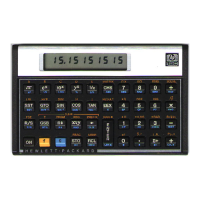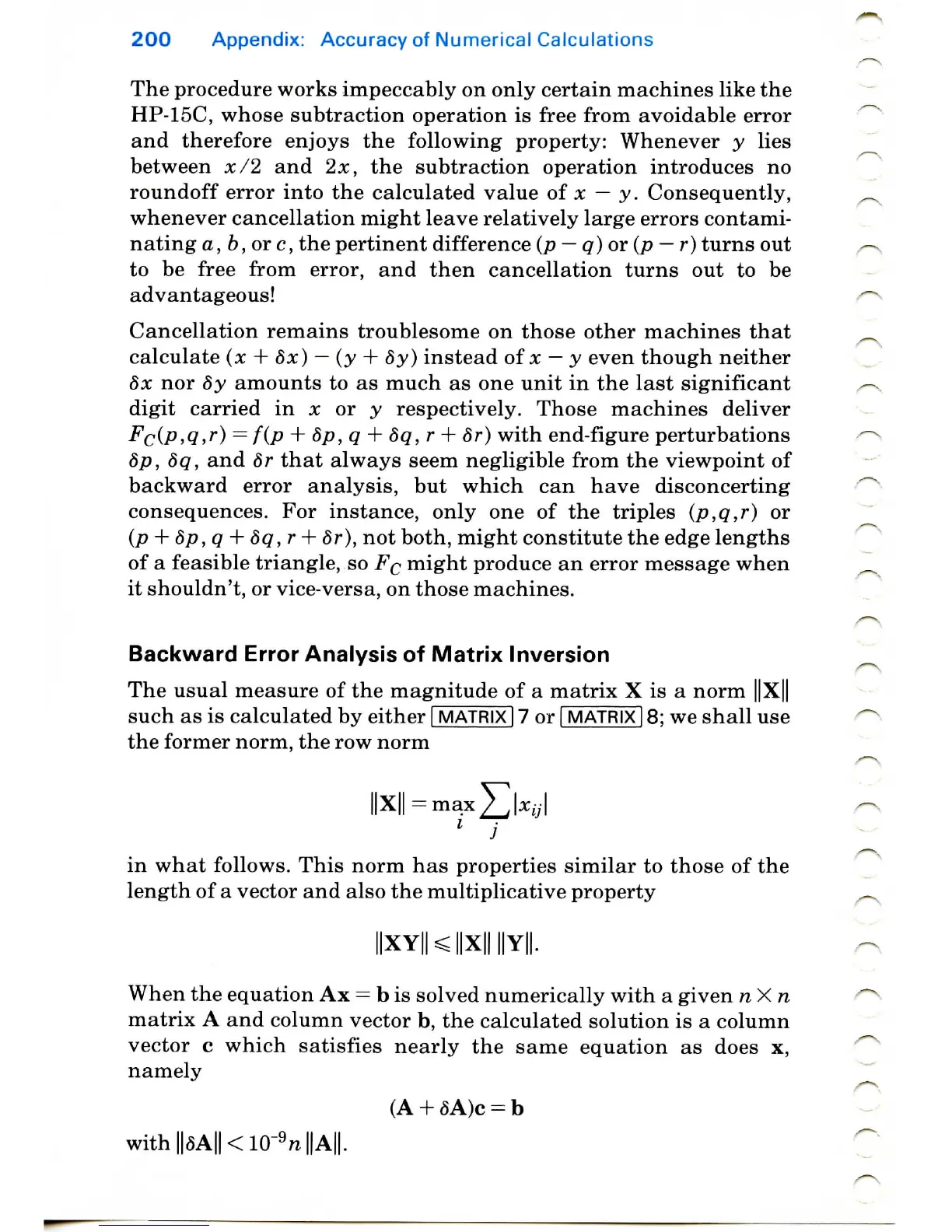200
Appendix:
Accuracy
of
Numerical
Calculations
The
procedure works impeccably
on
only certain machines like
the
HP-15C,
whose subtraction operation
is
free
from
avoidable error
and
therefore
enjoys
the
following property: Whenever
y
lies
between
x/2
and 2x, the
subtraction operation introduces
no
roundoff
error into
the
calculated value
of x —
y.
Consequently,
whenever
cancellation might leave relatively large errors contami-
nating
a,
b,
or
c,
the
pertinent
difference
(p
—
q) or (p
—
r)
turns
out
to be
free
from
error,
and
then cancellation turns
out to be
advantageous!
Cancellation remains troublesome
on
those other machines
that
calculate
(x + dx)
—
(y +
8y)
instead
of x
—
y
even though neither
dx
nor 8y
amounts
to as
much
as one
unit
in the
last
significant
digit carried
in
x
or y
respectively. Those machines deliver
Fc(P,Q,r)
—
f(P
+
8p,
q + dq, r +
dr)
with end-figure perturbations
8p,
5q,
and 8r
that
always seem negligible
from
the
viewpoint
of
backward
error analysis,
but
which
can
have disconcerting
consequences.
For
instance, only
one of the
triples (p,q,r)
or
(p
+
8p,q
+
dq,r
+
<5r),
not
both, might constitute
the
edge
lengths
of
a
feasible triangle,
so
Fc
might produce
an
error message when
it
shouldn't,
or
vice-versa,
on
those machines.
Backward Error Analysis
of
Matrix
Inversion
The
usual measure
of the
magnitude
of a
matrix
X is a
norm ||X||
such
as is
calculated
by
either
|
MATRIX
17
or |
MATRIX|
8; we
shall
use
the
former
norm,
the row
norm
in
what
follows.
This norm
has
properties similar
to
those
of the
length
of a
vector
and
also
the
multiplicative property
When
the
equation
Ax = b is
solved numerically with
a
given
n
X
n
matrix
A and
column vector
b, the
calculated solution
is a
column
vector
c
which satisfies nearly
the
same equation
as
does
x,
namely
(A
+
<5A)c
= b
with||5A||<Hr9n||A||.

